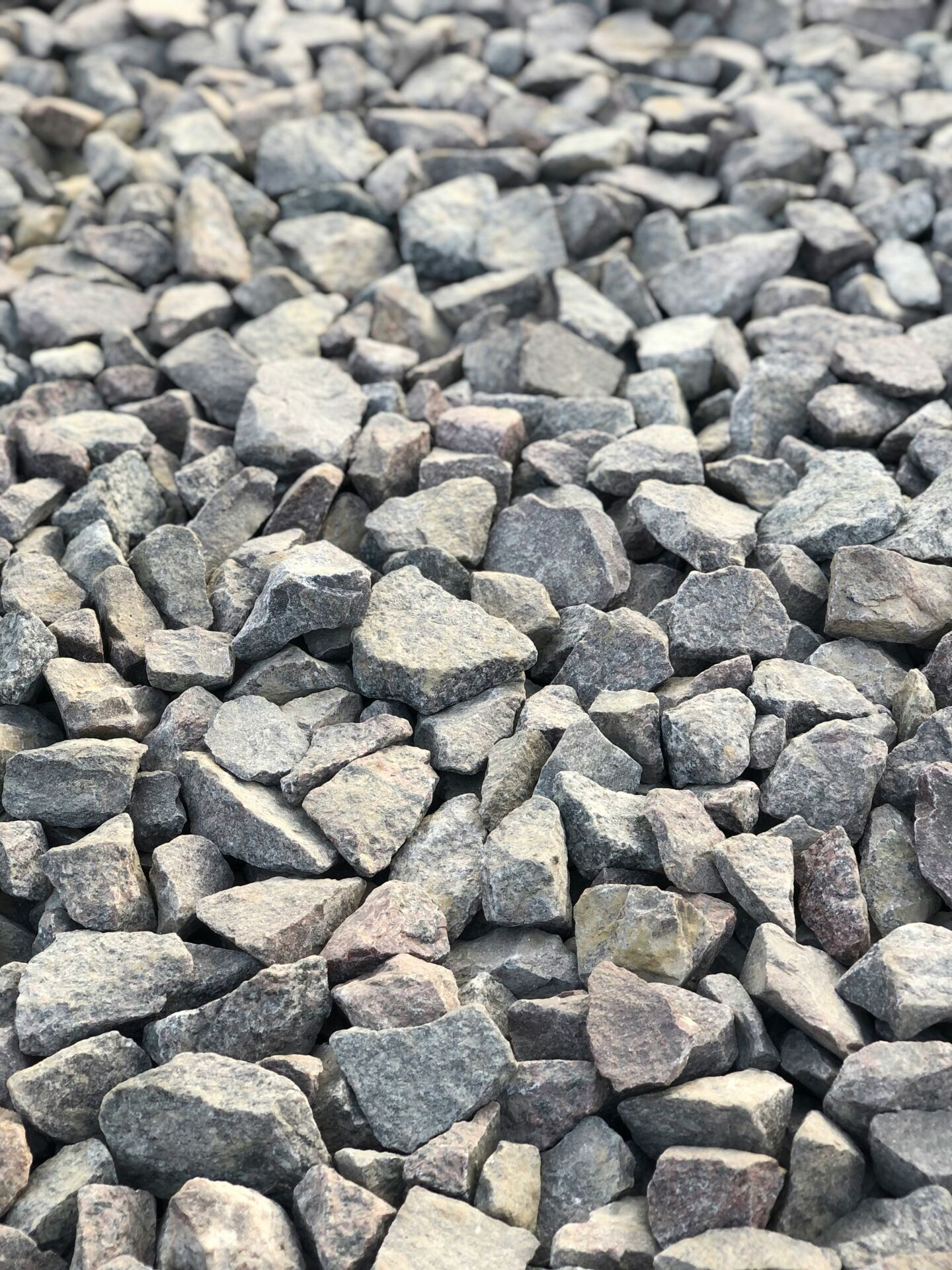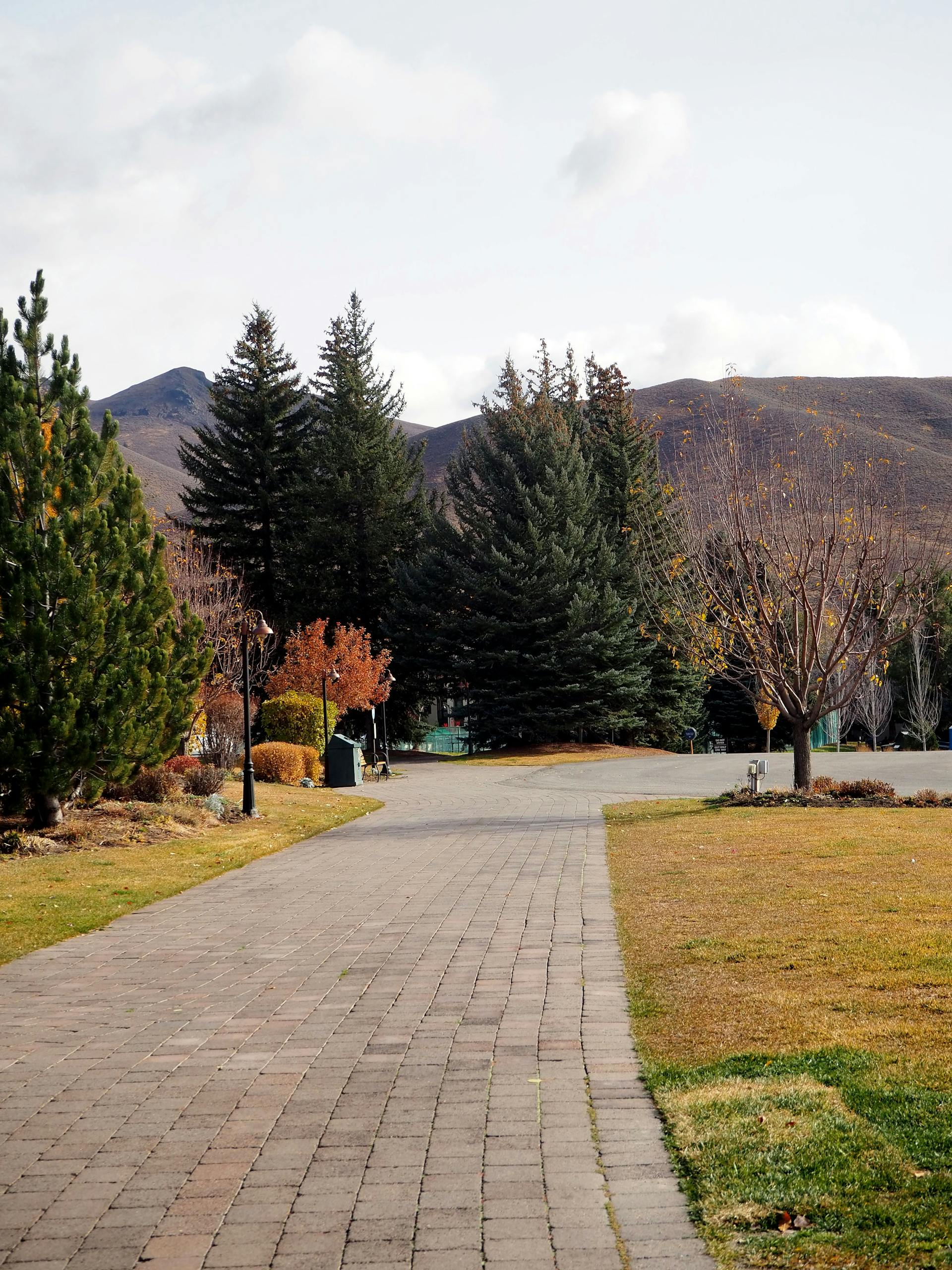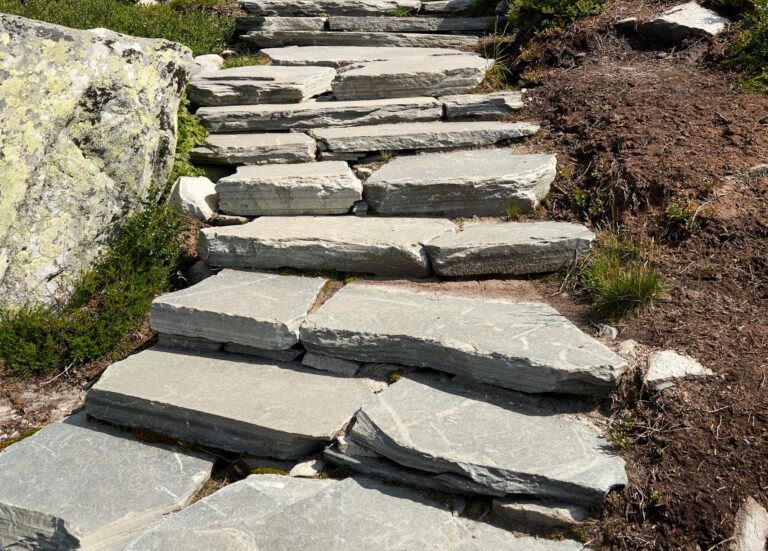How Washed 2″ to 3/4″ Clean (Sewer Spec) Offers a Higher Performing, More Environmentally Safe Septic System than Plastic Risers
Modern septic system designs often give owners a choice between a traditional gravel drainfield and newer plastic chamber systems (often called risers…
Modern septic system designs often give owners a choice between a traditional gravel drainfield and newer plastic chamber systems (often called risers or leach field chambers). While plastic chambers can be convenient to install, there is a strong case to be made for using a washed 2″ to 3/4″ clean stone, meeting sewer specifications, for your septic leach field. In fact, this clean, angular gravel – like the Certified 2” to 3/4” Clean Sewer Spec rock provided by local pi7】 – can lead to a septic system that performs better and is more environmentally friendly than plastic alternatives. In this article, we’ll break down why a gravel-based septic drainfield is advantageous: covering aspects like wastewater treatment efficiency, longevity, and ecological impact.
What is Washed 2″ to 3/4″ Clean Stone (Sewer Spec)?
This refers to crushed rock that has been screened to size between 3/4 inch and 2 inches, with all the fines (small particles and dust) washed out. The stones are angular (from crushing) and uniform. “Sewer spec” means it meets health department requirements for septic system media – typically that it’s clean (no dirt), durable (won’t break down), and of a certain size range to allow ample void space. Darby Pit’s version is even certified by Eastern Idaho Public Health for septic u9】.
In a drainfield, this stone is laid in trenches around perforated pipe. The gaps between rocks create lots of voids for wastewater to flow through and be treated as it percolates into the soil.
Superior Wastewater Treatment
1. Biological Surface Area: The gravel provides a huge surface area for the growth of the bio-mat – the slimy layer of bacteria that forms naturally and actually treats the wastewater. Each stone becomes coated with bacteria that consume pathogens and nutrients in the effluent. The nooks and crannies of the angular rock and the void spaces between create an ideal habitat for these microbes.
Plastic chambers, on the other hand, have smooth plastic surfaces and a big open vault. While they also allow a biofilm to grow on the soil underneath and sides, they have less internal surface area than a field of stones. Think of it like this: a gravel bed is like a coral reef with tons of surface for life, whereas a plastic chamber is more like a bare cave. More surface area = more bacteria = better treatment before the water reaches the environment.
2. Even Distribution of Effluent: When you pour water into a gravel-filled trench, it hits the rocks and spreads out in all directions through the gaps. This tends to disperse the effluent more evenly along the length of the trench. In a plastic chamber, the water might flow quickly to the lowest point or pool in one area until it rises and overflows the chamber edges to soil. Gravel, by capillary action and multiple contact points, helps spread the effluent laterally and vertically. This means more of your soil absorption area is being used at any given time, leading to less chance of overloading one spot. The washed, uniform nature of sewer spec rock is key here – because it’s free of fines, the water isn’t trapped or held up by mud; it flows freely but also trickles around each stone slowly, giving time for absorption.
3. Aeration: The voids in the gravel allow air to circulate. This is important because aerobic bacteria (those that need oxygen) are very effective at breaking down waste and are less smelly. A gravel drainfield encourages passive air flow (warm sewage water rises, drawing air in behind it in the trench). Plastic chambers have some air space too, but if they become flooded or if soil covering them is deep, they can go anaerobic more easily (leading to slower processing and potential odors). The stone in effect acts as a breathing apparatus for the field, storing oxygen in its pores. This aligns with why health codes approve this spec rock – it ensures good percolation and aerati9】.
4. Filtration: Although the primary treatment is biological, the gravel also provides a bit of physical filtration. Any small particles that escape the septic tank (like lint, hair, etc.) often get caught in the matrix of the gravel, where they can then break down over time. In a chamber, those particles would just drop to the soil surface and potentially clog it faster. The stone essentially gives a second chance for suspended solids to settle out before reaching the critical soil interface. Because the stone is washed and clean, we start without any fines that could clog – the only things getting trapped are actual particles from the effluent, which ideally are minimal if the tank is doing its job.
Longevity and Maintenance
1. Durability: The 2″ to 3/4″ sewer rock is usually a hard crushed stone (often granite or similar) that does not degrade or compress. Once it’s in place, it will last the life of the system (often 20-30+ years). It supports the soil above so the trench doesn’t collapse. Plastic chambers are strong when new, but over decades, plastic can become brittle, especially in cold climates or with certain soil chemicals. If heavy vehicles accidentally drive over a plastic chamber field, they can crack or crush. The gravel field, with a proper cover of soil, can handle more weight distribution (though one should never routinely drive over any septic field). And if a stone is somehow crushed – well, it’s still a stone, it just becomes two smaller stones and the system keeps working. There’s no catastrophic failure mode like there is with a broken chamber.
2. Clogging Resilience: All drainfields develop a bio-mat that can eventually slow infiltration. Gravel systems tend to fail gradually – you might notice squishy areas or smells, signaling it’s time for a resting period or rejuvenation. Chambers, however, if they fail, can sometimes have more sudden issues like soil sealing off quickly in one area due to lack of even distribution (because when one area clogs, all the effluent then heads to the next outlet point, overloading it). With gravel, the effluent was always more uniform, so the biomat builds uniformly, and when it reaches a certain thickness, the whole system just percolates slower. You get more warning and can take action (like resting the field or adding a new trench line) before backup occurs. Moreover, if you ever need to rejuvenate a gravel field, you can dig up the stone, wash it (or replace it with new washed stone), and put it back – essentially resetting the field. It’s labor, but it’s straightforward. With plastic, if the field clogs, you often have to abandon it and build a new one; you can’t really “wash” the underground soil interface easily, and the chambers add complexity to any restoration attempt.
3. Inspection: If you have inspection ports (which you should in either system), seeing what’s going on is arguably easier in a gravel trench. You might have a vertical pipe down to the stone. You can probe and feel if stone has sludge or if it’s clear. In a chamber, you can inspect the inside of the chamber – if it’s flooded or not – but you can’t see the condition of the actual soil infiltration surface as easily without digging up a whole chamber.
4. Root Resistance: In many areas, roots from plants seek out the rich nutrients in leach fields. Gravel fields somewhat slow root intrusion; roots will still come into the area for moisture, but they have to wind around stones and often stick to the top of the biomat. In a plastic chamber, it’s open season for roots to drop right into the chamber where there’s moisture and nutrients available; they can fill a chamber up more aggressively. Essentially, a rock matrix may tangle roots and keep them at the edges more than an open void environment.
Environmental Considerations
1. No Plastic in the Ground: Using washed rock is essentially using inert, natural material (stone) whereas chambers are often large polyethylene or polypropylene pieces. There is increasing concern about plastics in the environment. Burying a lot of plastic in the ground has a few environmental downsides:
- Manufacturing of those plastic units has a carbon footprint and often uses non-renewable resources (oil).
- If a chamber ever breaks or when a system is eventually abandoned, that plastic might stay in the soil for centuries if not removed.
- Over time, plastic can degrade into microplastics. It’s slow in a buried, dark environment, but temperature fluctuations and slight chemical exposures can cause microscopic shedding. Stone, by contrast, is natural – you’re basically putting rock back into the ground, nothing synthetic about it.
2. Groundwater Protection: Clean stone leach fields have decades of proven performance in protecting groundwater quality. Many regulatory bodies only relatively recently approved chamber systems and, while they are generally effective when sized correctly, there have been instances where chambers did not treat effluent as well, potentially due to less aerobic action. The certified sewer spec gravel ensures that the percolation is predictab7】. There’s also evidence that the gravel provides some anoxic zones for denitrification (conversion of nitrates to harmless nitrogen gas), because within the gravel bed you can have micro environments. Nitrate removal is an environmental plus; plastic vs stone differences here are subtle, but some studies indicate traditional fields can remove a bit more nitrogen due to those varied oxygen conditions.
3. Adaptability to High Flows: In environmentally sensitive areas (like near waterways or in high water table seasons), a rock bed can store some effluent in the voids during peak loads and release it slowly. A 12″ deep stone bed can have 4″ of void space that acts like a buffer. Chambers also have storage capacity, but if they fill up, there’s no media to still allow trickle flow – it’s just full (like a pipe). So stone systems might handle surges (say a busy weekend at a commercial property or lots of laundry one day) a bit better by providing both treatment and temporary storage.
4. Use of Local Materials: Environmental impact is also about local sourcing. Gravel for your septic likely comes from a local pit (like Darby Pit’s certified product), meaning lower transportation emissions and supporting local economy. Plastic chambers are manufactured elsewhere (often out-of-state) and shipped. Using stone aligns with a sustainable approach of using natural, local materials when possible.
Counterpoint – Why People Choose Chambers (and Rebuttals): Plastic chambers became popular mainly for easier installation (no heavy stone to transport or spread) and less digging (as they can provide more infiltrative area per length). They are also useful in very tight sites or at sites where bringing in tons of gravel is impractical. However, on performance and environmental grounds:
- The labor saved is a one-time benefit, whereas the system must function for decades. Most homeowners won’t personally be installing – their contractor might push a chamber system because it’s faster for them. But a diligent contractor or homeowner thinking long-term might accept the extra effort of gravel install for peace of mind.
- In mountainous or rural regions (like ours), getting washed rock delivered is usually not an issue (our pits are near communities). In remote off-grid builds, ironically plastic might be harder to haul in large pieces than bringing a truck of gravel which can be sourced closer by or even crushed on site.
- Some claim chambers provide more storage and can handle intermittent use better. They do have big open volume, but as we argued, stone beds also have significant pore volume and arguably spread the effluent more which in intermittent use might actually help re-aerate and dry out the system between uses, thus readying it for the next dose.
Conclusion
When deciding on a septic leach field design, opting for a washed 2″–3/4″ clean stone system is a nod to proven engineering and environmental stewardship. A system built with quality stone per septic specifications offers:
- Reliable, passive treatment due to robust bacterial colonies on the gravel.
- Longevity with materials that don’t degrade and an ability to rehabilitate if needed.
- Natural integration – basically using rock and soil to purify wastewater as opposed to all synthetic components.
- Regulatory acceptance – Health departments like EIPH certify such gravel for a reas7】; it meets their stringent criteria for effective sewage treatment.
Plastic chamber systems aren’t “bad” – many work fine when properly designed – but they often trade off some of the safety factors and treatment finesse that gravel provides for the sake of convenience in installation. For the environmentally conscious or those who take a belt-and-suspenders approach to critical infrastructure like septic, gravel has the edge.
The septic drainfield is out of sight and one hopes out of mind, but it’s essentially a private mini wastewater treatment plant. Choosing a higher-performing media like washed sewer-spec rock ensures that plant runs smoothly with minimal oversight. It’s an investment in durability and environmental protection. And in the lifecycle of a property, a few extra upfront costs or efforts for a gravel system pale in comparison to the peace of mind knowing your septic system is robust and naturally doing its job to protect your land and water.
In summary, washed clean gravel drainfields have stood the test of time and continue to offer superior performance in key areas (biological treatment, distribution, longevity, and environmental safety) versus the newer plastic chamber systems. Especially in our region where quality stone is available (like Darby Pit’s certified septic rock) and where the pristine environment is worth preserving, sticking with stone is often the best choice for your septic system.






